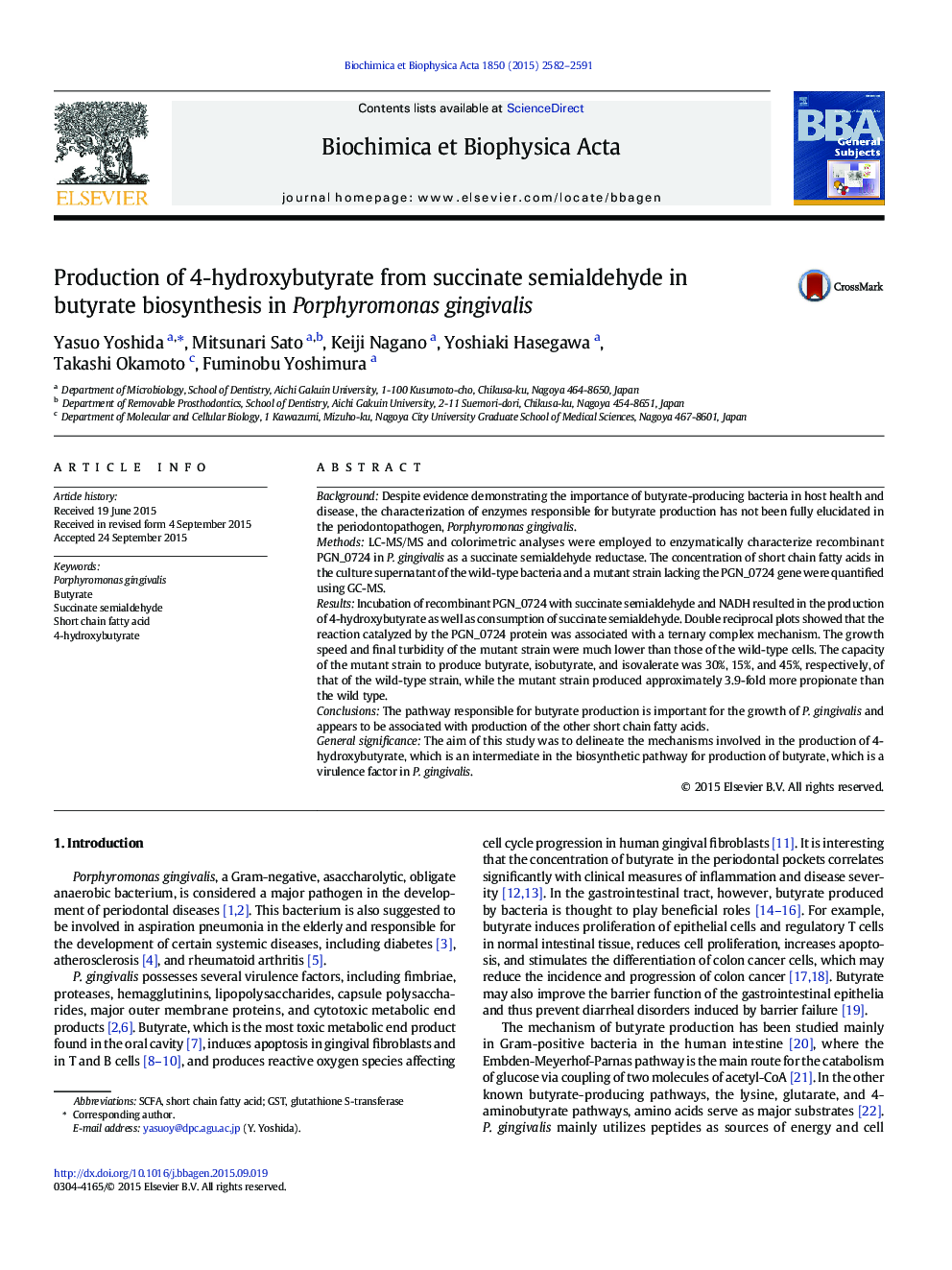| کد مقاله | کد نشریه | سال انتشار | مقاله انگلیسی | نسخه تمام متن |
|---|---|---|---|---|
| 1947381 | 1537483 | 2015 | 10 صفحه PDF | دانلود رایگان |
• The PGN_0724 protein in P. gingivalis was experimentally shown to catalyze the reduced reaction of succinate semialdehyde to produce 4-hydroxybutyrate, which is an intermediate in the biosynthetic pathway for butyrate.
• The growth speed and final turbidity of the mutant strain disrupting the PGN_0724 gene were much lower than those of the wild-type cells.
• The capacity of the mutant strain to produce butyrate, isobutyrate, and isovalerate was 30%, 15%, and 45%, respectively, of that of the wild-type strain, while the mutant strain produced approximately 3.9-fold more propionate than the wild type.
• It was suggested that enzymes other than the PGN_0724 protein are also responsible for the reduced reaction, and that an alternative pathway for butyrate production, which is independent from PGN_0724, exists.
BackgroundDespite evidence demonstrating the importance of butyrate-producing bacteria in host health and disease, the characterization of enzymes responsible for butyrate production has not been fully elucidated in the periodontopathogen, Porphyromonas gingivalis.MethodsLC-MS/MS and colorimetric analyses were employed to enzymatically characterize recombinant PGN_0724 in P. gingivalis as a succinate semialdehyde reductase. The concentration of short chain fatty acids in the culture supernatant of the wild-type bacteria and a mutant strain lacking the PGN_0724 gene were quantified using GC-MS.ResultsIncubation of recombinant PGN_0724 with succinate semialdehyde and NADH resulted in the production of 4-hydroxybutyrate as well as consumption of succinate semialdehyde. Double reciprocal plots showed that the reaction catalyzed by the PGN_0724 protein was associated with a ternary complex mechanism. The growth speed and final turbidity of the mutant strain were much lower than those of the wild-type cells. The capacity of the mutant strain to produce butyrate, isobutyrate, and isovalerate was 30%, 15%, and 45%, respectively, of that of the wild-type strain, while the mutant strain produced approximately 3.9-fold more propionate than the wild type.ConclusionsThe pathway responsible for butyrate production is important for the growth of P. gingivalis and appears to be associated with production of the other short chain fatty acids.General significanceThe aim of this study was to delineate the mechanisms involved in the production of 4-hydroxybutyrate, which is an intermediate in the biosynthetic pathway for production of butyrate, which is a virulence factor in P. gingivalis.
Journal: Biochimica et Biophysica Acta (BBA) - General Subjects - Volume 1850, Issue 12, December 2015, Pages 2582–2591
